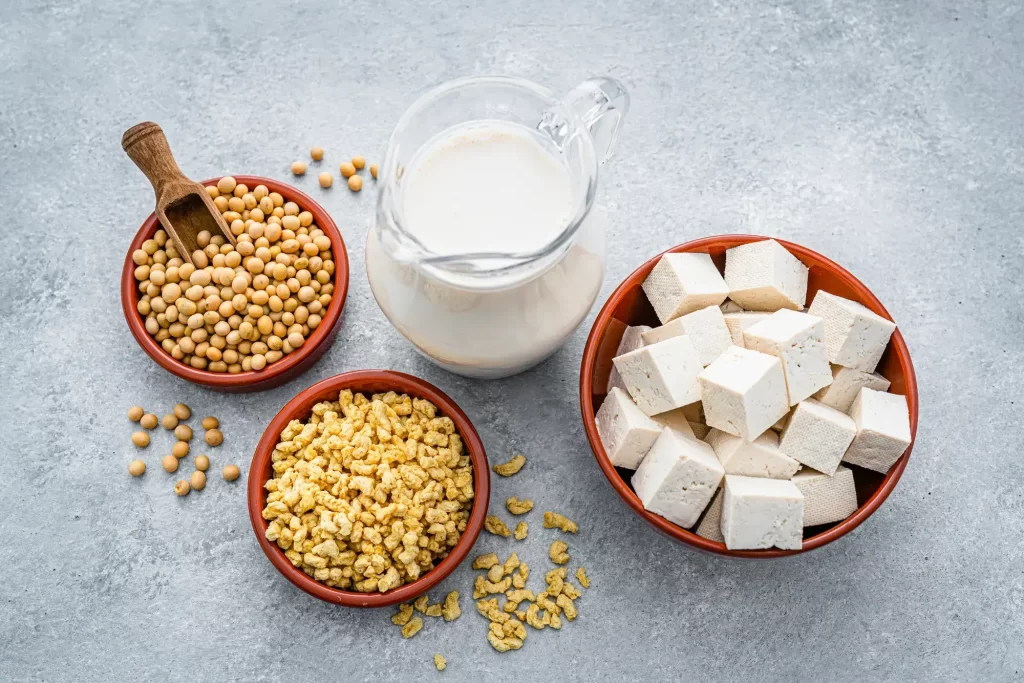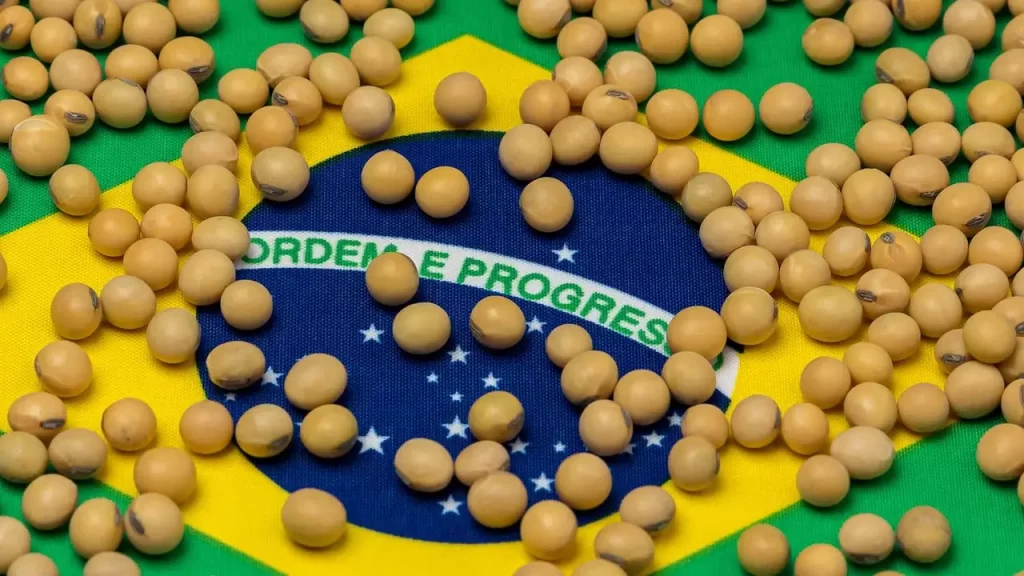In the spring of 2025, tensions in the U.S.-China trade relationship escalated once again. The U.S. government announced the re-imposition of high tariffs on a range of Chinese imports in areas including electric vehicles, semiconductors, green energy equipment, and agricultural machinery, with a total value of more than $350 billion. The Chinese government quickly responded by imposing counter tariffs of up to 84% on some goods, including U.S. agricultural products. The resulting “tariff storm” quickly swept through the global supply chain and trade landscape.
In this geopolitical game, agriculture has become the most vulnerable and the first to be injured in the economic tug-of-war between the two sides. U.S. farmers are facing a triple whammy of plummeting exports, backlogged inventories and falling prices as they lose China, the world’s largest buyer of agricultural products. China, on the other hand, faces the core challenges of ensuring food safety, maintaining a stable supply of agricultural products, and avoiding single-market dependence.
This post will focus on how China is adjusting its agricultural trade strategy amidst the tariff storm and delve into its repositioning in the global agricultural landscape. From dependence on imports from the US to strategic cooperation with countries such as South America and Canada, to the promotion of domestically produced agricultural machinery to the sea and the autonomy of agricultural science and technology, China is stepping out of a new path of agricultural development that takes into account safety, diversity and high quality.
Contents
- 1 I. U.S. Agricultural Exports Blocked|U.S. Farmers in Another Crisis of Confidence
- 2 Ⅱ.China strains quickly | Diversifying Imports to Replace U.S. Products
- 3 III. Supply chain reshaping: how to build a new pattern of multilateral cooperation in agriculture?
- 4 Ⅳ.Domestic Efforts|Self-sufficiency Enhancement and Scientific and Technological Agriculture
- 5 V. Synchronized Transformation of Agricultural Machinery Market|New Trends in Import and Export Structural Adjustment
- 6 VI. Market Trend Keywords|Google Hot Topics Reveal Buyer Focus
- 7 VII. Future Outlook|China’s Agricultural Role in the New Global Order
- 8 Conclusion
I. U.S. Agricultural Exports Blocked|U.S. Farmers in Another Crisis of Confidence
For a long time, China has been the largest buyer of U.S. agricultural products, especially in the areas of soybeans, corn, beef, nuts, and so on.
Typical damaged industries:
Soybeans: China once accounted for more than 60% of total U.S. soybean exports. Now soybean prices have fallen as much as 3.7% in a single day due to the tax hike.
California nut industry: 2023 California agricultural output value of 59 billion U.S. dollars, including nuts rely heavily on China. The last round of trade war losses have been as high as $880 million, the current round or losses up to $6 billion.
Meat and dairy: prices have slumped and inventories have piled up as a result of the ripple effect of Chinese sanctions.
“We’ve spent decades building up our export channels to China, and they’re gone overnight.”
– Midwestern U.S. soybean farmer

Ⅱ.China strains quickly | Diversifying Imports to Replace U.S. Products
China is shifting its sourcing focus from the U.S. to other countries, especially in South America, at an alarming rate.
Brazil has emerged as the biggest winner:
Exports totaled $58.618 billion in 2023, accounting for 24.85% of China’s agricultural imports.
It exported 74.65 million tons of soybeans in 2024, accounting for 71.1% of China’s imports.
In addition to soybeans, it also supplies core commodities such as cotton, beef, corn, and sugar.
In the face of the uncertainty of the U.S. agricultural export channels, China did not sit on its hands, but began to lay out its import diversification strategy as early as the last round of trade wars. 2024-2025, China further strengthened its agricultural cooperation mechanism with South American countries, signing a series of agreements on grain and feed imports.
Brazil becomes the most solid strategic partner
Brazil is now China’s largest supplier of soybeans. With its favorable tropical climate and large planting base, Brazil’s soybean planting area has been expanding in recent years, reaching about 45 million hectares in 2024, a record high. In addition to soybeans, Brazil is gradually replacing the U.S. market share in a number of categories such as frozen beef, corn and sugar.
China is not only the largest customer of Brazilian agricultural products, but also helps Brazil to improve its export capacity by investing in infrastructure. For example, the “China-Brazil Agricultural Corridor” jointly constructed by the two sides has been fully opened, and the logistics cost from farms to ports in the Midwest has dropped by more than 30%.
Multi-country approach, global agricultural network taking shape
Canada: to become China’s second largest wheat supplier by 2025. Due to its vast arable land and GMO-free agricultural products, Canada’s wheat, canola, pork and other products are highly favored by the Chinese market.
Argentina: As the second largest agricultural exporter in South America, its soybean and soybean oil products have been granted fast-track approval by the Chinese Ministry of Agriculture.
New Zealand: China’s free trade upgrade agreement with New Zealand lands in 2024, further lowering tariff barriers for dairy products, and New Zealand has seen significant growth in categories such as liquid milk, butter and cheese.
Other rising countries:
| Country | Key export categories |
| Canada | Canola, wheat, frozen pork |
| Argentina | Soybeans, soybean oil, frozen beef |
| New Zealand | Powdered milk, butter, liquid milk, cheese |
| Russia | Wheat, barley, vegetable oils |
These countries are gradually filling in the market gaps left by U.S. products and building a more robust agricultural supply chain for China.

III. Supply chain reshaping: how to build a new pattern of multilateral cooperation in agriculture?
New trend of supply chain globalization:
From single dependence to multiple combinations: no longer relying on the US alone.
Deepening cooperation with South America: Brazil and Argentina have become new strategic sources of Chinese agricultural products.
Simultaneous development of new markets: special agricultural products from Central Asia and the Middle East, such as honey, wheat and tomato products.
Key actions:
Signing of multilateral agricultural agreements
Expansion of import green channels in the FTA
Launching of “offshore agricultural investment” programs (e.g., soybean plantations in Brazil)
Ⅳ.Domestic Efforts|Self-sufficiency Enhancement and Scientific and Technological Agriculture
In addition to strengthening external cooperation, China also understands the importance of its own agricultural foundation. 2024, China elevated agricultural science and technology to the level of national strategy, and put forward the 14th Five-Year Plan for Intelligent Agricultural Science and Technology, which focuses on the following directions:
1. gene editing + intelligent breeding Breeding
The Chinese Academy of Agricultural Sciences (CAAS) and the National Agricultural Science and Technology University (NASTU) platform have cooperated to promote a number of seed research and development projects with independent intellectual property rights. Highly disease-resistant, salt-tolerant and cold-tolerant crops bred using CRISPR and other gene-editing technologies will be promoted first in key grain-producing areas such as Heilongjiang and Inner Mongolia, with the goal of boosting grain yields by more than 10%.
2. Digital Agriculture Infrastructure Development
The Chinese government has invested in the construction of “Digital Agriculture Demonstration Zones” in several provinces in East and Central China. These zones are equipped with:
AI farmland monitoring stations
automated irrigation and unmanned aircraft spraying systems
intelligent storage and agricultural products traceability platform
This marks the formal advancement of China’s agriculture from “yield increase-oriented” to “intelligent management-oriented”, and improves the ability to cope with unexpected risks.
3. Breakthroughs in the localization of agricultural equipment
A number of localization substitutions have been achieved in the field of agricultural machinery. The export of new-generation agricultural machinery products, represented by combine harvesters, laser graders and plant protection drones, will increase by 28% year-on-year in 2025.
Meanwhile, a number of Chinese agricultural machinery manufacturers have signed memorandums of understanding with countries along the “Belt and Road”, and opened overseas maintenance stations and technical cooperation centers, which have strengthened the competitiveness and service capacity of Chinese agricultural machinery in the world.
4. Strategic breakthroughs in agricultural science and technology:
Gene-edited crops promoted on a large scale
e.g. high-yielding soybeans, insect-resistant corn, saline-resistant rice
Intelligent agriculture accelerated to the ground
Promoting AI planting systems, drone spraying, and automated harvesters for practical use
Green agriculture policies introduced
More than 100 pilot counties of agricultural carbon neutral pilot + eco-cyclic agricultural pilot counties
Red line for food security clarified:
New version of the National Grain Security Law, emphasizing:
“Food must be self-sufficient, and the domestic production rate of staple grains should not be less than 95%.”

V. Synchronized Transformation of Agricultural Machinery Market|New Trends in Import and Export Structural Adjustment
The field of agricultural machinery, as the basic guarantee of agriculture, its import and export is also significantly affected by tariff policies.
Diversification of export markets:
High-end agricultural machinery, such as plant protection drones, tractors, laser graders, etc., exports have shifted to the Middle East, Africa and Southeast Asia.
Policies encourage agricultural machinery brands to expand to countries along the “Belt and Road”.
Export support policies such as tax exemption, export credit insurance fast approval to promote faster growth.
Adjustment of import direction:
Shift from the U.S. to Europe and Japan to purchase key components (e.g. drive shafts, engine core parts).
Joint ventures with German and Italian companies to build R&D centers to achieve high-end domestic substitution.

VI. Market Trend Keywords|Google Hot Topics Reveal Buyer Focus
Top Search Keywords (H1 2025):
“China soybean import Brazil”
“China tariffs agriculture 2025 “
”US farmers trade war impact“
”Alternative to US ag exports“
”China Canada wheat trade“
These search terms show that readers around the world are highly concerned about the following aspects:
Whether China will abandon U.S. agricultural products in the long run
Which countries will replace U.S. products as the new favorites
Whether agricultural cooperation will be tilted to the ”Belt and Road” countries
Whether China’s agricultural machinery has global competitiveness Will China’s agricultural machinery become globally competitive?
VII. Future Outlook|China’s Agricultural Role in the New Global Order
Against the backdrop of a volatile trade structure between China and the United States, China is completing a strategic transformation of its agricultural sourcing and technology at an unprecedented pace.
Five major trends in China’s agricultural trade:
Stabilizing South American partnerships
Accelerating domestic substitution
Global layout of agricultural machinery and equipment
Technology-based agriculture promoting smart manufacturing
Green agriculture and ESG development
New positioning:
China is no longer a passive buyer of agricultural products, but an important “collaborator + rule maker” in the global agricultural map.
Conclusion
In the face of global uncertainty and rising tariffs, China has not only stabilized its agricultural system but has actively transformed it—expanding international partnerships and advancing domestic modernization. With a growing focus on smart, green agriculture and a strong push for Chinese-made equipment to enter global markets, China is evolving from a major importer to a rule-setter and innovation leader in the global agricultural landscape.
At this turning point, MINNUO is here to help businesses seize new opportunities. As an experienced exporter of agricultural machinery, we serve clients across South America, the Middle East, and Africa with reliable, cost-effective equipment and full-service support. Whether you’re looking to understand export trends, explore our best-selling machines, or connect with buyers worldwide—reach out to our team. We’re ready to support your global growth.

